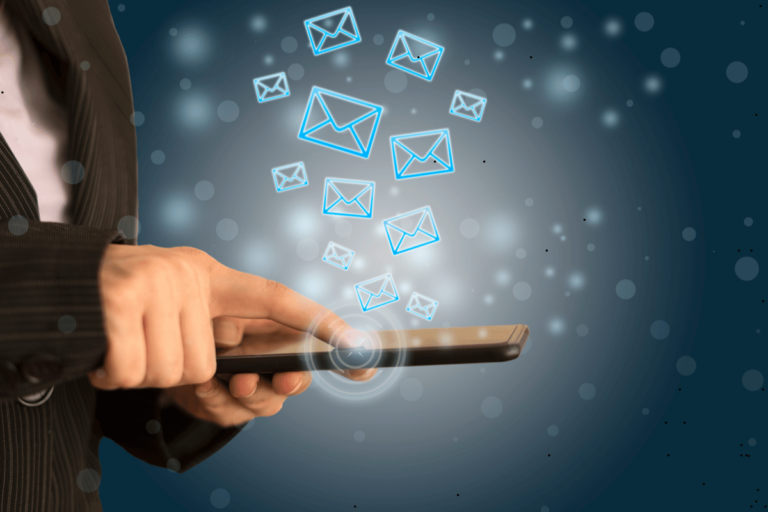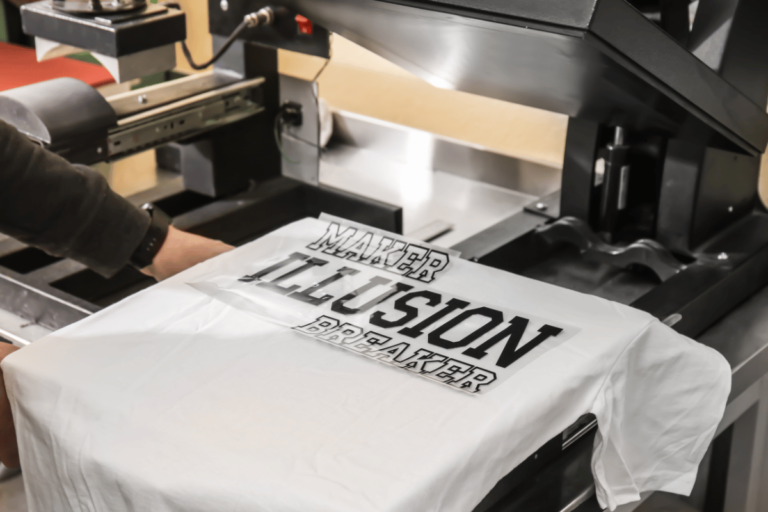Email Marketing in 2024: A Buyer’s Guide to Optimization and Personalization
Did you know that personalized emails have a 29% higher open rate and a 41% higher click-through rate compared to generic emails?
In today’s competitive digital landscape, optimizing your email marketing campaigns is crucial. With the right strategies and tools, you can drive engagement, boost conversions, and enhance customer experiences.
In this buyer’s guide, we will explore the latest trends and techniques for email optimization and personalization in 2024, helping you achieve outstanding results.
Get ready to take your email marketing to the next level.
Key Takeaways
- Personalization is crucial in email marketing as it leads to higher open rates, click-through rates, and transaction rates.
- Analyzing data is essential for effective email optimization, allowing for segmentation, A/B testing, and personalized content.
- Crafting compelling subject lines is vital to increase open rates and engagement, and testing different subject lines is necessary to resonate with the audience.
- Segmentation strategies and personalization with dynamic content are key for targeted content delivery and enhancing relevance and engagement.
The Importance of Personalization in Email Marketing
You need to understand the significance of personalization in email marketing. The power of customization and the impact of personalization can’t be overstated. In today’s digital age, consumers are constantly bombarded with a sea of emails vying for their attention. If you want your emails to stand out and make an impact, personalization is key.
Studies have consistently shown that personalized emails have higher open rates and click-through rates compared to generic mass emails. In fact, according to a recent study, personalized emails deliver 6x higher transaction rates. This means that by personalizing your emails, you have a much better chance of engaging your audience and driving conversions.
Personalization goes beyond simply addressing your recipients by name. It involves tailoring your content to match their interests, preferences, and behaviors. By leveraging customer data and segmentation, you can send targeted and relevant emails that resonate with your audience.
Furthermore, personalization helps to build trust and strengthen customer relationships. When recipients receive personalized emails that cater to their specific needs and interests, they feel valued and understood. This fosters a sense of loyalty and encourages repeat business.
Analyzing Data for Effective Email Optimization
To effectively optimize your emails, it’s important to analyze data and gain insights into your audience’s preferences and behaviors. By employing data analysis techniques and measuring email performance, you can refine your email marketing strategy for better results.
Here are four reasons why analyzing data is crucial for email optimization:
- Identify trends and patterns: Data analysis allows you to uncover trends and patterns in your email campaign performance. By examining open rates, click-through rates, and conversion rates, you can identify what types of content and subject lines resonate best with your audience.
- Segment your audience: Analyzing data helps you segment your email list based on various criteria such as demographics, purchase history, or engagement level. By sending targeted emails to specific segments, you can deliver more relevant content and increase engagement.
- Test and iterate: Data analysis enables you to conduct A/B testing and measure the impact of different variables, such as subject lines, CTAs, or email designs. By testing and iterating based on data-driven insights, you can optimize your emails for better performance over time.
- Personalize content: By analyzing data, you can gain a deeper understanding of your audience’s preferences and personalize your email content accordingly. Personalization leads to higher engagement and conversion rates, as it creates a more tailored and relevant experience for your subscribers.
Crafting Compelling Subject Lines to Increase Open Rates
Crafting compelling subject lines is crucial for increasing open rates in your email marketing campaigns.
By following subject line best practices, such as keeping it concise and specific, using personalization, and creating a sense of urgency, you can grab your audience’s attention and encourage them to open your emails.
Data has shown that emails with compelling subject lines have higher open rates, leading to increased engagement and potential conversions.
Subject Line Best Practices
Make sure your subject lines are compelling to increase open rates. Crafting effective subject lines is crucial for capturing your audience’s attention and improving email open rates. Here are four best practices to consider:
- Keep it concise: Aim for subject lines between 30-50 characters to ensure they’re fully visible on mobile devices and avoid being cut off in email previews.
- Personalization is key: Use the recipient’s name or other relevant information to create a sense of personal connection and increase the chances of your email being opened.
- Create a sense of urgency: Incorporate words like ‘limited time offer’ or ‘exclusive deal’ to create a sense of urgency and encourage immediate action.
- Test and optimize: Continuously test different subject lines to see what resonates best with your audience. Analyze open rates and adjust your approach accordingly.
Increasing Open Rate
You can significantly increase your open rate by crafting compelling subject lines that grab your audience’s attention. A well-crafted subject line can make the difference between your email being opened or deleted. To help you create subject lines that resonate with your audience, consider using A/B testing to experiment with different variations. This allows you to test different subject lines and determine which ones generate higher open rates. Additionally, it’s important to consider email deliverability when crafting subject lines. Avoid using spam trigger words or excessive punctuation, as this can negatively impact your deliverability. Focus on creating subject lines that are concise, clear, and provide a sense of urgency or value.
| A/B Testing | Email Deliverability |
|---|---|
| Test variations | Avoid spam triggers |
| Measure open rates | Concise subject lines |
| Optimize content | Clear and urgent |
| Increase engagement | Avoid excessive punctuation |
Segmentation Strategies for Targeted Content Delivery
Identify three key segments based on your customers’ preferences and behaviors to deliver personalized content effectively. Customer segmentation is crucial in email marketing as it allows you to target specific groups of customers with tailored content that resonates with their needs and interests. By understanding your audience and segmenting them accordingly, you can enhance engagement, increase conversions, and ultimately drive revenue for your business.
Here are four key strategies for effective segmentation:
- Demographic Segmentation: Divide your customers based on demographic factors such as age, gender, location, and income level. This helps you create content that appeals to their specific characteristics and preferences.
- Behavioral Segmentation: Segment your customers based on their actions, such as purchase history, website browsing behavior, or engagement with previous email campaigns. This allows you to send targeted messages that align with their past behaviors and increase the likelihood of conversion.
- Psychographic Segmentation: Consider your customers’ beliefs, values, interests, and lifestyles. This helps you create content that resonates on a deeper level and builds a stronger connection with your audience.
- Personalization with Dynamic Content: Utilize dynamic content to personalize your emails even further. By dynamically changing the content based on customer attributes or behaviors, you can deliver a more relevant and engaging experience.
Automation Tools for Streamlining Email Campaigns
Are you looking for ways to streamline your email campaigns and achieve better results?
Enhanced email automation is a game-changer in the world of email marketing. By automating repetitive tasks like sending welcome emails, birthday messages, or abandoned cart reminders, you can save time and deliver personalized campaigns that resonate with your audience.
Embrace the power of automation tools to optimize your email marketing efforts and drive higher engagement and conversions.
Enhanced Email Automation
Streamline your email campaigns with enhanced automation tools. These tools can help you optimize your email marketing efforts and deliver personalized content to your subscribers.
Here are four reasons why you should consider implementing enhanced email automation:
- Email segmentation: With enhanced automation, you can segment your email list based on various criteria such as demographics, purchase history, or engagement level. By sending targeted emails to specific segments, you can increase open rates, click-through rates, and ultimately, conversions.
- Dynamic content: Enhanced automation tools allow you to create dynamic content that adapts to each subscriber’s preferences and behavior. By personalizing the content based on their interests, you can deliver more relevant and engaging emails, resulting in higher engagement and better ROI.
- Time-saving: Automation tools streamline your email campaigns by automating repetitive tasks such as sending welcome emails, abandoned cart reminders, or birthday greetings. This saves you time and effort, allowing you to focus on other important aspects of your business.
- Data-driven decision-making: Enhanced automation tools provide detailed analytics and reports on your email campaigns. By analyzing this data, you can gain valuable insights into what works and what doesn’t, allowing you to make data-driven decisions and continuously improve your email marketing strategy.
Incorporating enhanced automation tools into your email marketing strategy can significantly improve your campaign’s efficiency, personalization, and overall success. Start exploring these tools today and take your email marketing to the next level.
Personalized Campaign Automation
With personalized campaign automation tools, you can easily automate and optimize your email campaigns for maximum efficiency and effectiveness. These tools allow you to create automated workflows that streamline the process of sending personalized emails to your subscribers. By analyzing data such as purchase history, browsing behavior, and demographic information, these tools can generate personalized recommendations for each individual recipient.
By leveraging AI and machine learning, you can significantly enhance your email marketing efforts. For those unsure where to start, utilizing a free AI email assistant can help automate personalized content delivery, saving both time and effort. This tool analyzes customer data and creates tailored emails that resonate with individual recipients, boosting engagement and conversion rates. This level of personalization not only increases engagement but also drives conversions and customer satisfaction.
With automated workflows, you can set up triggers and actions that automatically deliver targeted content to the right people at the right time. This saves you time and effort while ensuring that your emails are relevant and impactful.
Personalized campaign automation tools are essential for maximizing the success of your email marketing campaigns.
Leveraging AI and Machine Learning for Enhanced Personalization
You can maximize the effectiveness of your email marketing campaigns by harnessing the power of AI and machine learning for personalized content. AI and machine learning technologies can help you improve customer engagement and achieve real-time personalization in your email marketing campaigns.
Here are four ways AI and machine learning can enhance the personalization of your email marketing:
- Segmentation: AI and machine learning algorithms can analyze customer data to segment your audience based on various factors such as demographics, preferences, and past behaviors. This allows you to send targeted emails to specific segments, increasing the relevance of your content.
- Predictive Analytics: AI and machine learning can analyze historical data to predict customer behavior and identify the most effective content, timing, and offers for each individual. This helps you send emails at the right time and with the right message, increasing the chances of conversion.
- Dynamic Content: AI and machine learning can generate personalized content in real-time based on individual customer data. This means you can create highly tailored emails that resonate with each recipient, leading to higher engagement and conversion rates.
- Automated Optimization: AI and machine learning can continuously analyze the performance of your email campaigns and automatically optimize them for better results. This includes adjusting subject lines, email copy, and calls-to-action based on real-time feedback and data.
Conclusion
In conclusion, optimizing and personalizing your email marketing campaigns is crucial for success in 2024.
By analyzing data, crafting compelling subject lines, utilizing segmentation strategies, and leveraging automation tools, you can effectively engage your audience and increase open rates.
Furthermore, by incorporating AI and machine learning, you can take personalization to the next level and deliver highly relevant content.
Don’t miss out on the opportunity to connect with your customers on a deeper level and drive conversions through personalized email marketing.






